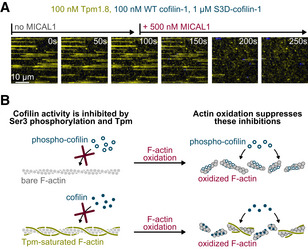Figure 5. Actin filament oxidation removes their protections from cofilin‐induced disassembly.

-
ATime‐lapse of actin filaments constantly exposed to nGr‐Tpm1.8 (yellow), WT mCh‐cofilin‐1 (blue) and S3D‐cofilin‐1, and to MICAL1 from time t = 100 s onwards. Here we mixed WT with an excess of S3D‐cofilin‐1 to mimic cellular conditions in which most of cofilin‐1 is inhibited by phosphorylation. While Tpm prevents cofilin from binding to non‐oxidized filaments, MICAL1 rapidly oxidizes actin, allowing cofilin to bind and sever filaments. See also Supp Movie.
-
BSummary of the results. Different mechanisms can simultaneously down regulate the activity of cofilin (here cofilin phosphorylation and protection by Tpm). Actin oxidation is a rapid means to cancel these protections without, for example, the need to activate a large concentration of cofilin.
